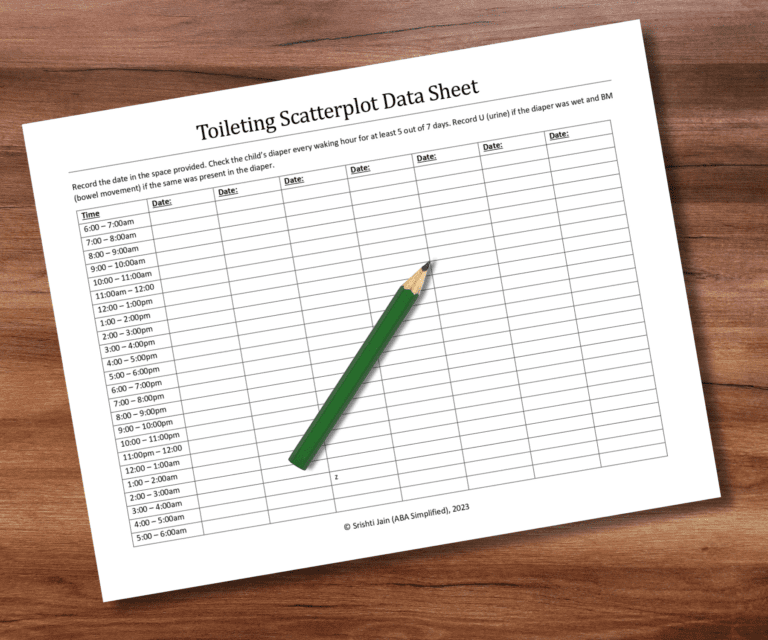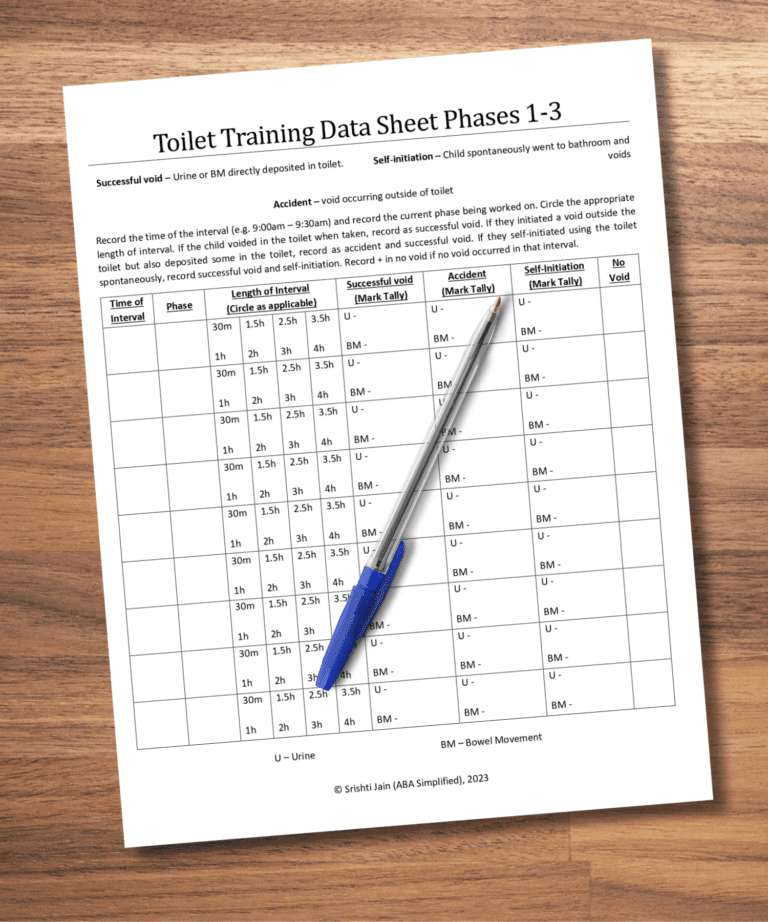BLOG POST
Toilet Training 101: A Comprehensive Guide
Published on 5th September by ABA Simplified


So, you’re gearing up for the adventure of potty training, but the very thought of it might be giving you some jitters. Transitioning your learners from diapers to using the toilet is no small feat, especially when working with a child that has challenges in the areas of communication, motor planning, sensory processing, behavior etc. Each child’s unique challenges must be taken into consideration when developing a successful and socially significant toileting program.
Why Opt for A Parent-Implemented Toilet Training Model?
Research by Kroeger & Sorensen (2010) notes the importance of parental involvement in the potty-training process, especially since most children with ASD live at home with their parents. Autistic children often have challenges with generalizing skills across different settings and people, making parental involvement crucial for skill maintenance and overall success of the program.
Signs Of Toileting Readiness to Watch For
Before you dive into toilet training, keep an eye out for essential physiological and developmental readiness signs. Recognizing these signs will set your learner up for success. In a study by Kaerts et al. (2012), 20 toileting readiness signs were outlined, including:
- Ability to remain dry for several hours at a time.
- Ability to pull clothing up and down.
- Ability to sit on the toilet for 5 minutes at a time.
- Ability to follow simple one-step directions.
- Ability to imitate motor actions.
In addition to these prerequisites, ensure that your learner has no fears associated with the toilet like sounds of the flush or of falling into the bowl. They should also be in good health without any toileting-related issues and must have a stable home environment (i.e., no major changes like moving homes, birth of a sibling, death, divorce etc). If the child is afraid of the toilet or has ongoing illnesses, you’ll want to address those before beginning potty training.
What You'll Need for Successful Toilet Training
- Toddler toilet seat (if appropriate)
- Step stool
- Variety of reinforcers
- Toy bin in the bathroom and the room closest to the toilet
- Timer
- Data sheets and clipboard
- Plastic shower liner/tarp
- Cleaning supplies
Now that you’re equipped, let’s get started!
The Toilet Training Process in Eight Phases
Before we dive in to the 8 phases of potty training, we will first need to gain an understanding of your learners toileting patterns. Ask the parents to complete a toileting scatterplot. With this information handy, we’re all set to get started!
The key to success is quite simple. Have the child naked from the waist down! This is going to help parents catch an accident as soon as they begin! You will want to select one toilet to start with. Ideally, one that has a bedroom attached, because that is where the parent and child will be hanging out for most of the day, especially in the early phases. Choose a room that is comfortable, has plenty of space to move around and is stocked with moderately preferred toys and activities to keep your learner entertained between potty breaks. Since our learners are going to be naked from the waist down, it might be a good idea to lay down a shower liner/tarp on the floor and bedding because things are about to get messy!
Depending on the needs of the child, the toilet training process can be divided into 8 phases:
- Voiding with prompts – On the first day, parents should take their child to the toilet immediately after waking. After that, go every 30 minutes, allowing them to sit for 3 minutes at a time and reinforcing any voids, no matter how small.
- Increasing interval times – Gradually start extending the time between toilet breaks from 30 minutes to 2 hours, taking it slow and steady.
- Faded verbal prompts – start reducing verbal prompts while continuing to lengthen toilet intervals up to 4 hours. Ensure all verbal prompts are completely phased out before moving on.
- Spontaneous initiations – Replace verbal prompts with gestural prompts and differentially reinforce spontaneous initiations.
- Generalization to other toilets in the home – Limit the use of the previously trained toilet naturally (e.g., locked door, someone else is using it, bulky things blocking the doorway etc). When they head to the previously trained toilet, prompt your learner to use the other available toilet. Introduce each one at a time, and don’t forget to differentially reinforce!
- Re-introduction of clothing and washing hands – Use chaining to reintroduce clothing and wiping themselves after using the toilet. Next, work on washing hands using forward or backward chaining. Remember to fade out any physical, verbal, or gestural prompts (to a developmentally appropriate level) before moving on to the next phase.
- Communication training – Ensure all toilets are blocked in natural ways. Identify a communication method suitable for your learner (words, signs, PECS, AAC) to teach requesting. Remember to use culturally and developmentally appropriate language! Remember to gradually fade prompts using a time delay to allow for spontaneous requesting.
- Generalization in the community – Begin with generalization in one community setting by frequently asking the learner if they need to use the toilet. Gradually fade reminders by giving reminders further apart, while making sure to stay within a developmentally appropriate range. Target generalization across different locations, one at a time.
Want a more detailed step-by-step guide? Check out my guide that comes with editable data sheets, making the process even easier for you and the families you work with!
Disclaimer: As with all other ABA programs, individualization is important. Make sure to individualize this program to the needs of your learner. This blog contains affiliate links. This means that you pay the same amount but I get a small commission!
References
- Doan, D., & Toussaint, K. A. (2016). A parent-oriented approach to rapid toilet training. International Electronic Journal of Elementary Education, 9(2), 473-486.
- Kaerts, N., Van Hal, G., Vermandel, A., & Wyndaele, J. J. (2012). Readiness signs used to define the proper moment to start toilet training: A review of the literature. Neurourology and Urodynamics, 31(4), 437-440.
- Kroeger, K., & Sorensen, R. (2010). A parent training model for toilet training children with autism. Journal of Intellectual Disability Research, 54(6), 556-567.


Sign Up For Blog Updates!
Subscribe to stay in the loop with my latest blogs!
Thank you!
You have successfully joined our subscriber list.



